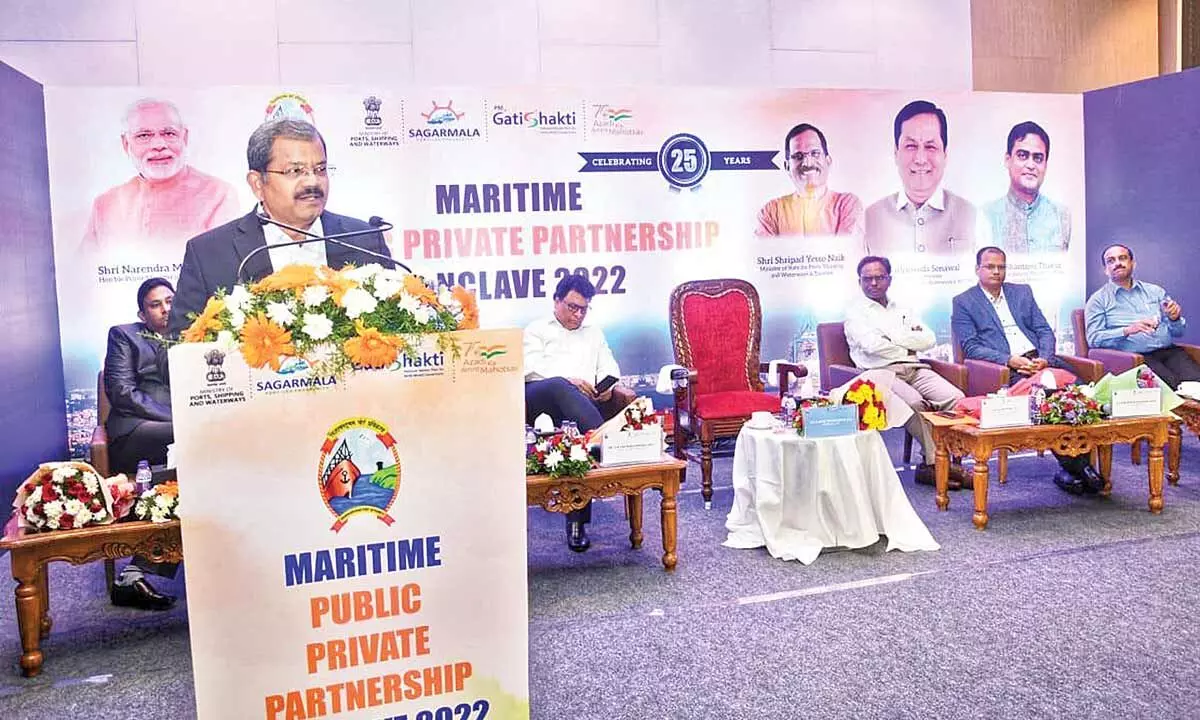PPP preferred mode for port-led development
GoI keen to implement PPP model in all major ports to make them globally-competitive, says Shripad Naik, Union Minister of State for Ports, Shipping and Waterways
image for illustrative purpose

Visakhapatnam Port Authority is adopting a trade and investor-friendly approach and this is likely to get good response from BOT operators for developing five or six berths very soon. It will emerge as a landlord port-facilitator for mechanisation through PPP investors
Visakhapatnam: The Public Private Partnership (PPP) model of development holds the key to port-led development, Union Minister of State for Ports, Shipping and Waterways Shripad Naik said on Wednesday.
Taking part in virtual mode in the inaugural of two-day maritime conclave organised here by Visakhapatnam Port Authority (VPA) to mark completion of 25 years of first PPP project in the port sector, he said the Government of India was keen on implementing PPP model of development in all the major ports to make them globally-competitive.
The first concession agreement under PPP model was signed by Jawaharlal Nehru Port Authority (JNPA), erstwhile JNPT in 1997 with Nhava Sheva International Container Terminal in Mumbai. Over the years, the Minister said PPP had turned into a preferred mode due to the successive governments' priority to give a bigger role to the private investors for higher efficiency.
VPA Chairman K Rama Mohan Rao in his address said despite certain hurdles, the PPP projects were heralding growth in major ports. Referring to the experience of VPA, said though it had problems with a couple of BOT operators, over the years, the ambiguity over the guidelines and regulatory mechanism were being removed.
VPA at present has six BOT operators and is in the process of finalising the agreements for a few more shortly so that the port could handle 90 per cent of its cargo in a totally mechanised environment and face effectively the competition posed by others. He said the port is confident of surpassing 72.72 million tonnes during the current year which it had achieved a couple of years ago.
He said better competition and greater privatisation will also ensure cost-effective operation for trade and commerce. He said the experiment done with the PPP model has yielded encouraging results and further with mid-course corrections, the efficiency parameters can be further improved.
Rao said as predicting the future dynamics is difficult, the concession agreement signed for 30 years will also undergo certain bottlenecks adding, over the years, the shortcomings are being addressed with redressal mechanism and market-driven tariffs under the new model of concession agreements introduced in 2021.
He said VPA is adopting a trade and investor-friendly approach and hoped that they will get good response from BOT operators for developing five or six berths very soon. "VPA will emerge as a landlord port-facilitator for mechanisation through PPP investors. Barring one or two, all 29 berths at the port are set to be mechanised," he stated. Divisional Railway Manager AK Satpathy described how the Railways is playing a key role in transportation of freight from one corner to another and said VPA and Railways are working hand-in-hand to promote trade and commerce from Visakhapatnam.
Sravan Shipping Services MD G Sambasiva Rao, Visakha Container Terminal Pvt Ltd Deputy COO Anil Narayanan, VPA Deputy Chairman Durgesh Dubey, Chief Vigilance Officer J Pradeep Kumar and others were present.

